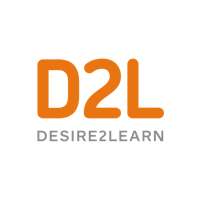In Thomas County, Georgia, students who have struggled in the mainstream have found a home in Bishop Hall Charter School. At Bishop Hall, students master skills at their own speed. Principal Chris Huckans believes that competency-based education (CBE) is one of the keys to the school’s success.
Huckans says that Bishop Hall’s use of the Brightspace learning management system provides students with highly personalized learning pathways, which “allow them to innovate and experiment.” He adds, “Kids are allowed to learn at their own pace, and can learn experientially.” The staff, says Huckans, are invested in this approach and are “passionate about seeing every child succeed and graduate.”
When a competency-based approach to assessment is in place, students must show what they know as well as what they can do. No more just showing up for class and meeting the seat time requirements. In fact, because CBE is grounded in outcomes, seat time becomes irrelevant as students demonstrate mastery at their own pace.
Bishop Hall is part of a growing number of schools embracing CBE. According to a 2016 report by iNACOL, 36 states are currently investigating policy surrounding competency-based education. And as interest in this approach to teaching and learning increases, so does the need for assessments to support it. Below are five ways to approach competency-based learning assessment.
1. Formative Assessments—Happening in Real Time
CBE takes students on a journey to demonstrate their knowledge, helping them prepare for the world and jobs that await them. When teachers use formative assessments to measure that knowledge, they gather information necessary to adjust teaching and learning as needed. Formative assessments support competency-based education by making sure teachers understand students’ needs, so that they can modify instruction as it is happening. Tasking students with submitting a video essay, for example, provides teachers with the opportunity to assess students’ understanding of a topic. Teachers can then provide real-time feedback to students that will help them to identify the areas in which they need to improve.
2. Digital Portfolios—Artifacts of Learning
Digital portfolios support a formative approach by encouraging students to collect artifacts that they can share with both peers and teachers. Students might attend a field trip, using their phones to capture images that support a topic of study. Portfolios also highlight learning’s natural progression. For instance, a high school freshman might undertake a service learning project that lasts until his graduation. His portfolio would highlight his project’s development, its revisions, and its completion as evidence of learning. This type of formative assessment allows students to demonstrate mastery authentically, providing space for them to reflect on stumbling blocks and the ways in which they overcame them.
3. Summative Assessments—Data Points
Unlike formative assessments, summative assessments are evaluative in nature—taking place after instruction is complete and gauging mastery of a skill or competency. Their outcomes can guide students’ efforts in subsequent learning. When I taught high school English, I used summative assessment results as part of data talks with students. If an exam showed that a student struggled with identifying theme, for instance, I would come to the data talk prepared with learning strategies and together we would develop a plan for remediation.
4. Authentic Assessments—Real World Learning
Authentic assessments, specifically, are student centered and focus on real life situations—performing a task, conducting an experiment, designing and building a project. Stanford researchers have found that students who are engaged in experiences that are connected to the real world are at an advantage when entering college or starting a career.
An authentic assessment in middle school might involve a cross curricular project, such as designing a community garden. Students would measure the area, calculate the number of seeds needed, and determine which plants would grow best in that location. In high school, students might be asked to design a building using drafting software, math, and physics skills to create their final product.
5. Technology’s Role—Empower and Innovate
With the right technology in place, a competency-based education model empowers students to take control of their own learning. Brightspace’s conditional release tool, for example, allows teachers to specify levels of skill mastery necessary before each student can advance to the next level of content.
Digital tools also enable the creativity and innovation embedded in a CBE approach. At Missouri’s Chinn Elementary, students used D2L’s Video Note tool to more fully engage in their research projects. Students researched an animal, wrote and illustrated their own books, then made videos of their finished projects. According to the school’s instructional technology facilitator, Matt Carlson, "Students were extremely excited to record themselves and just as eager to watch their recordings when finished.”

The teachers and instructional tech team that implemented Chinn Elementary's Video Note project
As competency-based education gains traction, I believe it will drive innovation in schools. And as student learning becomes the metric for evaluation, classrooms will embrace assessments that are more interactive, collaborative and hands-on—such as experiential learning and Breakout EDU-style puzzles. In every instance, CBE assessments will require students to put their pencils down and show what they know in new—and relevant—ways.



